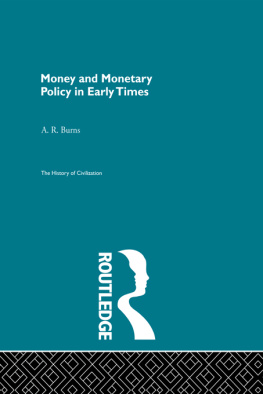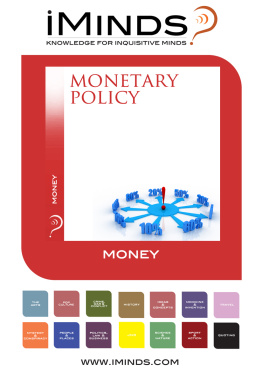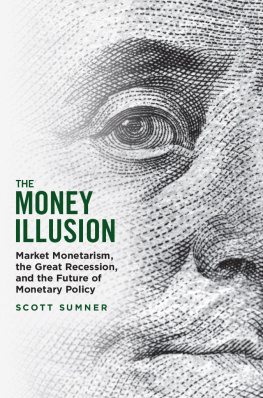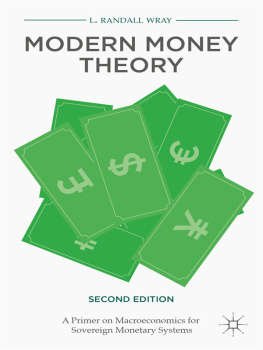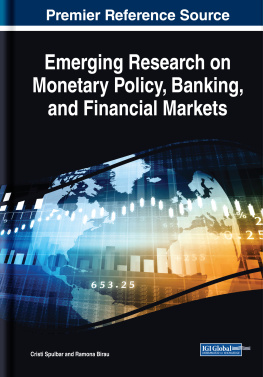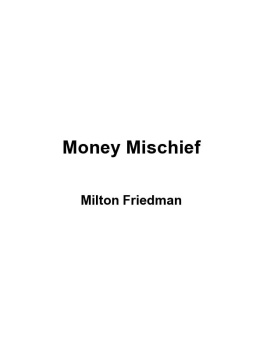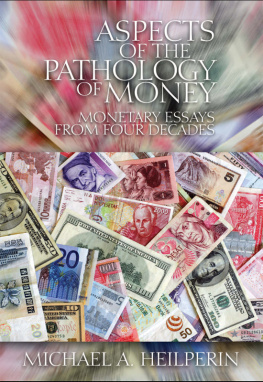The History of Civilization
Money and Monetary Policy in Early Times
THE HISTORY OF CIVILIZATION
General Editor C. K. Ogden
The History of Civilization is a landmark in early twentieth Century publishing. The aim of the general editor, C. K. Ogden, was to summarise in one comprehensive synthesis the most recent findings and theories of historians, anthropologists, archaeologists, sociologists and all conscientious students of civilization. The History, which includes titles in the French series LEvolution de lHumanit, was published at a formative time in the development of the social sciences, and during a period of significant historical discoveries.
A list of the titles in the series can be found at the end of this book.
First published in 1927 by Routledge, Trench, Trubner
Reprinted in 1996, 1999 by Routledge
2 Park Square, Milton Park,
Abingdon, Oxon, 0X14 4RN
&
270 Madison Ave,
New York NY 10016
Transferred to Digital Printing 2008
1996 Routledge
All rights reserved. No part of this book may be reprinted or utilized in any form or by any means electronic, mechanical, or other means, now known or hereafter invented, including photocopying and recording, in any information storage or retrieval system, without permission in writing from the publishers.
British Cataloguing in Publication Data
ISBN: 0-415-15570-3
ISBN Pre-history (12 volume set): 0-415-15611-4
ISBN History of Civilization (50 volume set): 0-415-14380-2
Publishers Note
The publisher has gone to great lengths to ensure the quality of this reprint but points out that some imperfections in the original may be apparent
Preface
T HE purpose of this book is to examine from the economic point of view the knowledge which has been accumulating at an ever-increasing rate during the past century concerning money in early times. It aims, in the first place, at an historical account of the emergence of money. In the second place, an attempt has been made to sketch the development of state policy with regard to the control of money from its beginnings, and to correlate policies at different times and places with political and, more especially, economic conditions. The control of monetary policy by governments was thrust into the field of public attention by the war of 1914-18 and the currency inflation of the immediately succeeding years in most European countries. Although in some respects, more particularly in the matter of the use of paper money and credit banking systems, conditions in early times are sharply contrasted with the contemporary situation, it is by no means fruitless to examine the history of the first thousand years of coining and to seek comparison with modem conditions. Indeed, if monetary theory is to be scientific it must be capable of explaining the events of this early period as well as those of the first quarter of the twentieth century. The desire to supply the means of checking our monetary theory and, at the same time, to supply historical background to replace supposititious accounts of primitive conditions has been, therefore, the impelling motive behind the execution of this work.
The evidence upon which a study of this kind must be based is not only sparse, but often also difficult of interpretation. In consequence, dogmatic statement, although perhaps more satisfying to the reader, would be misleading. The excuse for the presentation of alternative theories, and the not infrequent absence of clear-cut conclusions, is therefore in the nature of evidence. It is as desirable to keep well in mind the things that we do not know, as it is to re-examine from time to time the things we think we know.
The meagreness and the intermittent nature of the evidence available have already produced a mass of speculation by archaeologists and, particularly, numismatists. These attempts to yield a satisfying continuity occasionally lack probability, and, more often, consistency, and they have been here subjected to a critical examination which it is hoped will be regarded as a helpful and friendly gesture from economics to archaeology and numismatics. It is hoped, too, that the work will make its contribution to the larger synthesis which is now proceeding as a necessary and desirable aftermath of a period of specialization in the pursuit of knowledge.
I take this opportunity of recording my debt to Professor Edwin Cannan, LL.D., to whom I owe my training as an economist, and the anticipation of whose criticism has been a most vigorous and continuously operating influence playing upon this work. Professor Caimans criticism at various stages, as well as of the final manuscript, has been responsible for the removal of much obscurity and error; for so much as remains I am, of course, solely responsible.
The magnitude of my debt to other writers is revealed in the notes throughout the book, and in the bibliographical note annexed. I am also indebted to the officials of the Reading Room at the British Museum, London, whose resourcefulness and quiet efficiency has made possible the reading necessary for the work.
I am very deeply in debt to Eveline M. Burns, B.Sc. (Econ.), Ph.D. (Lond.), my wife and fellow-economist, for having found time in a very active life to take up the burden of reading through the proofs of the whole work. This service has saved the reader from many errors and obscurities.
Finally, my thanks are due to the officials of the Department of Coins and Medals at the British Museum for providing facilities for procuring the reproductions of ., Figs. 6 and 7 from Coin Types (G. Macdonald).
To all who have thus made possible the provision of illustrations, I tender my thanks.
A. R. B.
Before the Introduction of Coins
T HE idea of coining is one of the most important, if not the most important, single contribution to the heritage of economic knowledge that underlies the complex co-operation upon which modern life is based. But the idea did not flash suddenly upon the world: it came by such gradual stages that, as we retrace them, very much in the dark, we can never be sure which of them marks the beginning of the story. Coinage evolved, with almost incredible slowness, out of pre-existing conditions: we cannot, therefore, begin a discussion of money with the invention of coining: we are forced to consider the economic conditions in the earliest times of which there is record, that we may know the environment in which the new institution developed and which shaped its early career.
Economists have always suggested that money developed out of the priority in exchange obtained by some commodity in primitive times. Every book on economics introduces the reader to the subject of money, by way of an account of the trials and troubles of life in a community where unorganized barter is the only method of exchange. A community without a medium of exchange or a unit of value has, however, never been found, and the stage is one imagined for simplicity of exposition of the merits of money: it must not be taken seriously. The next supposed stage is where one or a small number of commodities has emerged as a general medium of exchange. The commodity, or one of the commodities so selected, would form one side of every exchange. But in very early times such commodities were often bulky the pursuit of this aspect of the evolution of money will take us too far forward into the subject. It is desirable first to investigate the commodities used in early times as mediums of exchange, and the basis of units of value.

